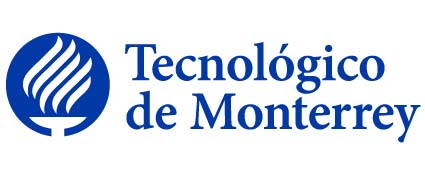
|
|||||
Disciplina asociada:Química |
|||||
Escuela:
Ingeniería y Ciencias
|
|||||
Departamento Académico:
Ciencias
|
|||||
Programas académicos: |
|||||
Requisitos:(Haber Cursado Q2004) |
|||||
Equivalencia:Q3017 ; Q 00001 |
|||||
Intención del curso en el contexto general del plan de estudios: |
|||||
|
Es un curso de nivel avanzado, que tiene la intención de utilizar conceptos avanzados de simetría y orbitales moleculares para evaluar y predecir las propiedades de compuestos inorgánicos, complejos de coordinación y organometálicos. En este curso se abordarán temáticas relacionadas con el Desarrollo Sostenible en aspectos ambientales y sociales. Requiere conocimientos previos de la estructura electrónica de los átomos, enlace químico y geometría molecular, así como los conceptos de ácidos y bases y fundamentos de mecánica cuántica. Como resultado del aprendizaje se espera que el alumno sea capaz de utilizar sus conocimientos de química inorgánica para aplicarlos en el diseño de nuevos pigmentos, catalizadores, materiales, etc. |
|||||
Objetivo general de la Unidad de Formación: |
|||||
| Describir los resultados principales de la mecánica cuántica para el átomo de hidrógeno, y extenderlos al resto de los elementos de la tabla periódica; analizar los elementos de simetría de una moléculas y clasificarlos de acuerdo al grupo de simetría al que pertenecen; construir diagramas de energía para moléculas diatómicas, moléculas simples poliatómicas, complejos de coordinación y combinaciones de ácidos base; explicar las propiedades físicas y químicas de complejos de coordinación basándose en su estructura electrónica y en sus uniones de ligando. | |||||
Técnica didáctica sugerida: |
|||||
| Aprendizaje colaborativo | |||||
Bibliografía sugerida: |
|||||
|
LIBROS DE TEXTO: * Miessler, Gary L. & Tarr, Donald A., Inorganic Chemitry, 3a edición, Prentice Hall, 1974, 9780130354716 LIBROS DE CONSULTA: * Simon, J. (Jacques), 1947-, Design of molecular materials : supramolecular engineering / Jacques Simon, Pierre Bassoul, England : Chichester, UK ; New York : Wiley, c2000, c2000, eng, 0471973718 (papel alcalino) * G.E. Rodgers, Descriptive Inorganic, Coordination and Solid-State Chemistry, 2nd, Thomson Learning Inc,, Inglés, * J.R. Bowser, Inorganic Chemistry, Brooks/Cole Pub. Co., Inglés, * D.F. Shriver, P.W. Atkins, C.H.Langford, Química Inorgánica Volumen I, 2da, Reverté, español, * Inorganic Structural Chemistry, Ulrich Müller, John Wiley & Sons, inglés, |
|||||
Perfil del Profesor: |
|||||
|
(400501)Doctorado en Química CIP: 400501 |
|||||
|
|||||
Discipline:Chemistry |
|||||
School:
Engineering and Sciences
|
|||||
Academic Department:
Sciences
|
|||||
Programs: |
|||||
Prerequisites:( Q2004) |
|||||
Equivalences:Q3017 ; Q 00001 |
|||||
Course intention within the general study plan context: |
|||||
|
It is an advanced level course whose intention is to use advanced symmetry and molecular orbits concepts to evaluate and predict the inorganic compounds properties, coordination complexes and organo-metallics. In this course topics related with Sustainable Development in environmental and social aspects will be approached. Requires previous knowledge in atoms' electronic structire, chemical bonds and molecular geometrics, as well as acid and base concepts and quantum mechanics fundaments. As learning result it is expected that the student be able to use inorganic chemistry knowledge to apple it in the design of new pigments, catalyzer, materials, etc. |
|||||
Course objective: |
|||||
| Describe the main results of quantum mechanics for the hydrogen atom, and extend them to other elements of the periodic table. Analyze the symmetry elements of a molecule and classify it according to the symmetry group to which it belongs. Construct energy diagrams for diatomic molecules, simple polyatomic molecules, coordination complexes and acid-base combinations. Explain the physical and chemical properties of coordination complexes on the basis of their electronic structure and the ligaments bonded. Explain the physical and chemical properties of organo-metallic compounds on the basis of their electronic structure and the nature of the ligaments bonded. | |||||
Teaching and learning tecniques: |
|||||
| Collaborative learning | |||||
Suggested Bibliography: |
|||||
|
TEXT BOOKS: * Miessler, Gary L. & Tarr, Donald A., Inorganic Chemitry, 3a edición, Prentice Hall, 1974, 9780130354716 BOOKS FOR CONSULTATION: * Simon, J. (Jacques), 1947-, Design of molecular materials : supramolecular engineering / Jacques Simon, Pierre Bassoul, England : Chichester, UK ; New York : Wiley, c2000, c2000, eng, 0471973718 (papel alcalino) * G.E. Rodgers, Descriptive Inorganic, Coordination and Solid-State Chemistry, 2nd, Thomson Learning Inc,, Inglés, * J.R. Bowser, Inorganic Chemistry, Brooks/Cole Pub. Co., Inglés, * D.F. Shriver, P.W. Atkins, C.H.Langford, Química Inorgánica Volumen I, 2da, Reverté, español, * Inorganic Structural Chemistry, Ulrich Müller, John Wiley & Sons, inglés, |
|||||
Academic credentials required to teach the course: |
|||||
|
(400501)Doctoral Degree in Chemistry CIP: 400501 |
|||||